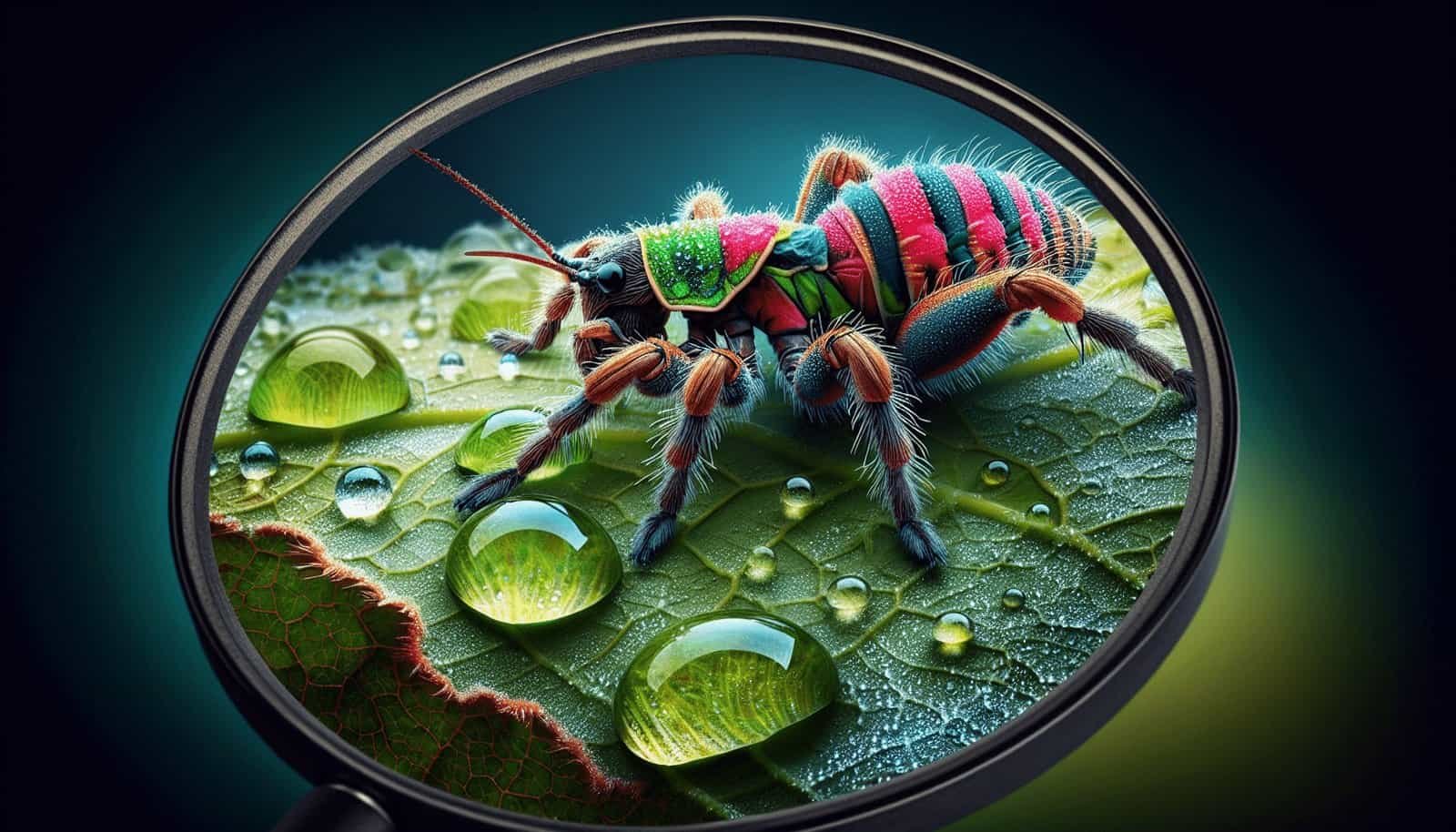You may wonder about the ideal feeding schedule for tarantulas at various stages of their lives. Providing the right nutrition is crucial for the health and well-being of these fascinating creatures. Whether you have a young tarantula or a fully-grown one, understanding their specific feeding requirements is essential to ensure they thrive. In this article, we will explore the recommended feeding schedule for tarantulas of different ages, offering valuable insights and practical tips to help you provide the best care for your eight-legged friend. So, let’s dive in and discover the secrets to keeping your tarantula happy and well-fed!
Feeding Frequency for Tarantulas of Different Ages
Feeding frequency for spiderlings
As spiderlings are in the early stages of their life, they have high metabolisms and require regular feeding. It is recommended to feed spiderlings once a week. This frequent feeding helps ensure that they receive the necessary nutrients for their rapid growth and development.
Feeding frequency for juveniles
Juvenile tarantulas are still growing but at a slower rate compared to spiderlings. They should be fed every 1 to 2 weeks. This feeding frequency allows them to continue their growth without overfeeding, which can lead to health issues such as obesity.
Feeding frequency for adult tarantulas
Adult tarantulas have reached their full size and do not require as much food as spiderlings or juveniles. Feeding them every 2 to 3 weeks is sufficient to meet their dietary needs. It is important to keep in mind that the feeding frequency may vary depending on the specific species, so it is best to research the particular needs of your tarantula.
Recommended Prey Size
Appropriate prey size for spiderlings
Spiderlings have small mouths, so it is important to provide them with prey that is suitable for their size. The ideal prey size for spiderlings is approximately the same size as their body or slightly smaller. This ensures that they can easily capture and consume their food without any complications.
Appropriate prey size for juveniles
Juvenile tarantulas can handle slightly larger prey compared to spiderlings. Prey that is around 1.5 times the size of their body is recommended. This helps them continue their growth while still being able to effectively consume their prey without any issues.
Appropriate prey size for adult tarantulas
Adult tarantulas can handle larger prey sizes as they have fully developed fangs and digestive systems. Prey that is around 2 times the size of their body is suitable for adult tarantulas. This prey size allows them to consume their food comfortably and provides them with the required nutrients.
Feeding Methods
Feeding methods for spiderlings
Spiderlings are delicate and can easily become stressed or injured during feeding. The recommended feeding method for spiderlings is the “pre-killed” method. This involves offering them prey items that have been previously killed. This prevents any potential injuries and ensures the spiderling can feed safely.
Feeding methods for juveniles
Similar to spiderlings, juveniles are also at risk of injury during feeding. The pre-killed method is still recommended for juveniles, as it minimizes the chances of harm. Additionally, offering prey with tong feeding or in a separate feeding container can further reduce any potential risks.
Feeding methods for adult tarantulas
Adult tarantulas are more capable of handling live prey without significant risks. Many keepers choose to offer live prey to adult tarantulas, allowing them to exhibit their natural hunting behaviors. However, it is essential to closely monitor the feeding process to ensure the tarantula does not get injured by the prey.
Dietary Requirements
Protein requirements for tarantulas
Tarantulas require a diet that is rich in protein to support their growth and overall health. It is recommended to feed them a variety of protein sources such as crickets, roaches, and mealworms. These prey items are readily available and provide the tarantulas with the necessary nutrients they need for survival.
Supplementation and variety in diet
To ensure that your tarantula receives a well-rounded diet, it is beneficial to supplement their primary protein source with occasional additions of other prey items. This can include waxworms, locusts, or even small vertebrates like pinky mice. Offering a varied diet helps prevent nutritional deficiencies and keeps the tarantula’s diet interesting.
Water requirements
Tarantulas obtain the majority of their required moisture from the prey they consume. However, it is important to provide them with a source of fresh water at all times. This can be done by placing a shallow dish of water in their enclosure. Ensure that the dish is secure and does not pose a drowning risk to the tarantula. Regularly clean and replenish the water to maintain its freshness.
Feeding Guidelines for Spiderlings
First molt
After a spiderling molts for the first time, it is important to wait for its exoskeleton to harden fully before offering any prey. This process may take a week or two, and attempting to feed a spiderling during this time can result in injury or even death. Patience is key when it comes to feeding spiderlings after their first molt.
Frequency of feeding
Spiderlings have high metabolisms and should be fed once a week. This consistent feeding schedule ensures they receive the necessary nutrition to support their growth and development. Remember to adjust the prey size accordingly to prevent any potential complications during feeding.
Prey size
Offer spiderlings prey that is approximately the same size as their body or slightly smaller. This ensures that they can effectively capture and consume their food without any difficulties. Providing prey that is too large may pose a choking hazard or result in an inability to consume the entire prey item.
Feeding environment
Create a suitable feeding environment for spiderlings by providing a small container or enclosure with a secure lid. This prevents any potential escapes or disturbances during feeding. Place the prey item in the enclosure and allow the spiderling to capture and consume it at its own pace.
Feeding Guidelines for Juveniles
Growth phase feeding
During the juvenile phase, tarantulas are still growing at a steady pace. It is essential to provide them with regular meals to support their growth. This phase is generally from the time they reach their second or third molt until they mature into adults.
Frequency of feeding
Juvenile tarantulas should be fed every 1 to 2 weeks. This feeding schedule allows them to continue their growth without overfeeding, which can lead to health issues such as obesity or regurgitation. Monitor the tarantula’s size and condition to determine the appropriate feeding frequency.
Prey size
Offer juvenile tarantulas prey that is around 1.5 times their size. This prey size ensures they can effectively capture and consume their food without any complications. Avoid offering extremely large prey items, as they may be difficult for the tarantula to manage.
Feeding environment
Create a suitable feeding environment for juveniles similar to spiderlings. Provide a secure enclosure or container for feeding and allow the tarantula to capture and consume the prey item at its own pace. Monitor the feeding process to ensure the tarantula completes the meal and remove any uneaten prey after a reasonable amount of time.

Feeding Guidelines for Adult Tarantulas
Maintenance phase feeding
Once a tarantula reaches adulthood, their growth rate significantly slows down. At this stage, the primary goal of feeding is to maintain their overall health and well-being. Adult tarantulas do not require as frequent feeding as spiderlings or juveniles.
Frequency of feeding
Feeding adult tarantulas every 2 to 3 weeks is generally sufficient to meet their dietary needs. Adjust the feeding frequency according to the specific species of tarantula and its individual feeding response. Remember that some species may require more or less frequent feedings.
Prey size
Adult tarantulas can handle larger prey sizes due to their fully developed fangs and digestive systems. Offer prey that is around 2 times the size of their body. This prey size allows them to consume their food comfortably and provides them with the necessary nutrients for maintenance.
Feeding environment
As with spiderlings and juveniles, provide a secure enclosure or container for feeding adult tarantulas. Offer live prey to allow them to exhibit their natural hunting instincts, but closely monitor the feeding process to ensure the tarantula’s safety. Remove any uneaten prey after a reasonable amount of time to maintain a clean and hygienic environment.
Signs of Overfeeding
Obesity
Overfeeding can lead to obesity in tarantulas. This can be observed through a visibly larger abdomen and a heaviness in movement. Obesity can cause various health issues for tarantulas, including reduced mobility and decreased lifespan. It is important to monitor the tarantula’s weight and adjust the feeding frequency accordingly.
Regurgitation
If a tarantula regurgitates its meal shortly after consuming it, it may be a sign of overfeeding. This can occur when the tarantula is unable to digest the excessive amount of food it has consumed. Avoid overfeeding to prevent regurgitation, as it can lead to nutritional deficiencies and stress on the tarantula’s digestive system.
Lack of appetite
A tarantula that consistently refuses to eat or shows a decreased appetite may be experiencing the effects of overfeeding. The excessive consumption of food can cause the tarantula to lose interest in further meals. It is important to assess the tarantula’s body condition and adjust the feeding schedule accordingly to avoid loss of appetite.

Signs of Underfeeding
Weight loss
Underfeeding can result in significant weight loss in tarantulas. This can be observed through a visibly thinner abdomen and a general decrease in body size. Weight loss indicates a lack of sufficient nutrition, and immediate attention should be given to ensure the tarantula’s well-being.
Visible weakness
A tarantula that appears weak or lethargic may be experiencing the effects of underfeeding. The lack of proper nutrition can lead to decreased energy levels and overall weakness. If weakness is observed, it is crucial to reassess the feeding schedule and provide appropriate amounts of food to the tarantula.
Excessive aggression or stress
Tarantulas that are constantly aggressive or display heightened stress levels may be a result of underfeeding. When not provided with enough food, tarantulas can become more aggressive in their hunting behavior. Additionally, stress-related behaviors such as excessive grooming or pacing may be observed. Adequate feeding is essential to maintain a balanced temperament in tarantulas.
Monitoring Feeding Habits
Observing feeding reactions
When offering prey to your tarantula, it is important to observe its feeding reactions. A healthy tarantula will approach the prey with alertness and capture it with precision. If a tarantula consistently fails to capture its prey or shows hesitation, it may be an indication of an underlying health issue. Regularly monitor the feeding behaviors and adjust the feeding schedule or prey size accordingly.
Keeping a feeding log
Maintaining a feeding log can be a useful tool in monitoring the feeding habits of your tarantula. Note down the date, prey size, and any observations during the feeding process. This log can help identify any patterns, changes in appetite or behavior, and assist in determining the most appropriate feeding schedule for your tarantula.
Consulting a veterinarian or experienced tarantula keeper
If you have concerns about your tarantula’s feeding habits or notice any abnormal behaviors, it is always beneficial to seek advice from a professional. Veterinarians with experience in exotics or knowledgeable tarantula keepers can provide valuable insights and guidance on feeding practices and overall tarantula care.
In conclusion, understanding the appropriate feeding frequency, prey size, feeding methods, and dietary requirements for tarantulas at different ages is crucial for their overall health and well-being. By following the recommended guidelines and closely monitoring their feeding habits, you can ensure that your tarantula receives a well-balanced diet and thrives in captivity. Remember to always prioritize the safety and welfare of your tarantula during feeding to prevent any potential injuries or health issues.


